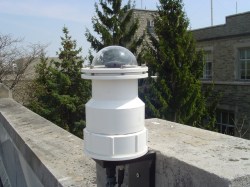Amateur radio is an eclectic hobby, to say the least. RF propagation, electrical engineering, antenna theory – those are the basics for the Ham skillset. But pneumatics? Even that could come in handy for hanging up antennas, which is what this compressed-air cannon is designed to do.
[KA8VIT]’s build will be familiar to any air cannon aficionado. Built from 2″ Schedule 40 PVC, the reservoir is connected to the short barrel by a quarter-turn ball valve. Charging is accomplished through a Schrader valve with a cheap little tire inflator, and the projectile is a tennis ball weighted with a handful of pennies stuffed through a slit. Lofting an antenna with this rig is as simple as attaching a fishing line to the ball and using that to pull successively larger lines until you can pull the antenna itself. [KA8VIT] could only muster about 55 PSI and a 70′ throw for the first attempt shown below, but a later attempt with a bigger compressor got him over 100 feet. We’d guess that a bigger ball valve might get even more bang for the buck by dumping as much air as quickly as possible into the chamber.
Looking to launch a tennis ball for non-Ham reasons? We’ve got you covered whether you want to power it with butane or carbon dioxide.
Continue reading “Pneumatic Launcher Gets Ham Antennas Hanging High”



 Ballistic gel is a broad term referring to a large chunk of dense gel generally used in firearms-related testing to reliably and consistently measure things like bullet deformation, fragmentation, and impact. It’s tough, elastic, and in many ways resembles a gigantic gummi bear. Fans of Mythbusters (or
Ballistic gel is a broad term referring to a large chunk of dense gel generally used in firearms-related testing to reliably and consistently measure things like bullet deformation, fragmentation, and impact. It’s tough, elastic, and in many ways resembles a gigantic gummi bear. Fans of Mythbusters (or 















